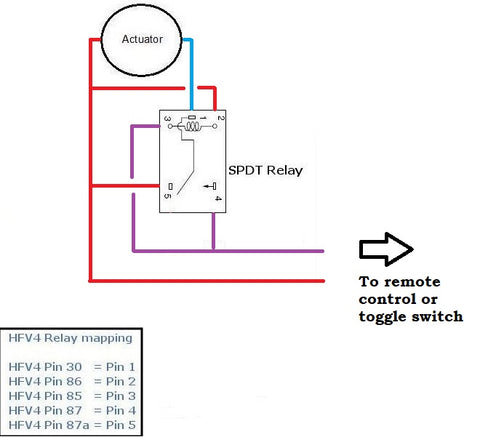Back driving of Linear Actuators.
Back driving a Linear Actuator can occur when the actuator is not connected to a power source: if a sufficiently large force is applied the actuator will not maintain its position and begin to reverse directions (i.e. back drive). The Deluxe Rod and IP66 Heavy Duty Rod can be back-driven if subject to a sufficient force when un-powered. This tutorial will present two methods of minimizing or preventing this from occurring.
Back EMF actuator brake with SPDT relay
The cheapest and most effective method of preventing the actuator from back driving is to use a SPDT relay and wiring harness. When no voltage is applied to an actuator and it is forced to back drive by a massive load the internal DC motor will act as a generator producing a small voltage. By using a relay as shown in the wiring diagram (below) this small voltage can be used to trigger the coil inside the relay and short the terminals of the motor together. When the motor terminals are shorted together they create a closed loop of wire contained within the magnetic field of the DC motor. The back EMF in the closed loop of wire creates an opposing torque to brake the DC motor and prevents the actuator from moving under external loads
.
Gas spring support
Using a gas spring in parallel with the actuators will alleviate the issue of back drive. We do not sell gas springs so these must be sourced from a third party and have appropriate dimensions to be installed in parallel to our linear actuators. By choosing a sufficiently strong gas spring the actuator will not back drive, however be aware that the actuator will need to overcome the force of the gas spring in addition to the load of your application when in motion.